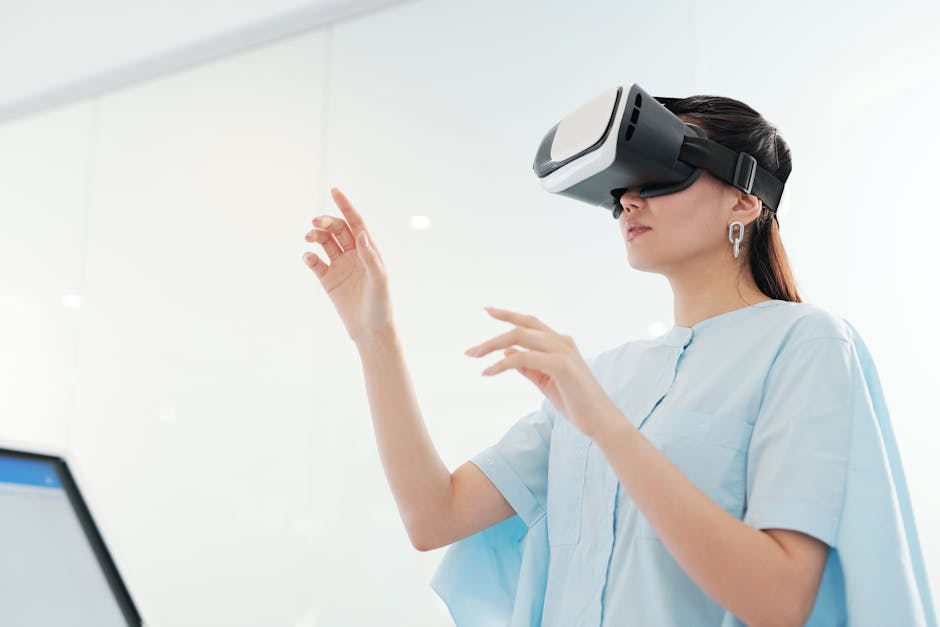Best ecommerce design 2025 is all about pushing boundaries to meet growing consumer expectations and setting trends in digital commerce. As we explore these trends, you will find key elements that distinguish the top ecommerce designs.
- Flexibility and Innovation: Designs that allow for seamless updates.
- Community-Building: Creating connections and trust through shared values.
- Interactivity and Personalization: Engaging product displays and custom experiences.
In the evolving world of ecommerce for 2025, staying ahead is paramount. As Steve Pogson, a seasoned Shopify Expert with over two decades of experience in ecommerce design, I have witnessed these changes firsthand. The best ecommerce design 2025 will truly set standards with its creative and consumer-focused approach.

Quick best ecommerce design 2025 definitions:
Interactive Product Visuals
In 2025, interactive product visuals are becoming a must-have for ecommerce sites. Shoppers want to engage with products before they buy, and businesses are responding by offering dynamic, interactive experiences. This trend is all about bringing products to life online, allowing consumers to explore them in ways that resemble in-store experiences.
Leading brands like IKEA have already paved the way by using interactive visuals. Customers can visualize furniture in their own living spaces through apps. This kind of engagement helps shoppers make more informed decisions, reducing return rates and increasing satisfaction.
Interactive visuals aren't just for furniture. Fashion brands are adopting virtual try-ons, allowing customers to see how clothes fit before purchasing. This trend is driven by the desire for flexibility and innovation, ensuring that customers feel confident in their purchases.
AI and AR Integration
Artificial Intelligence (AI) and Augmented Reality (AR) are revolutionizing ecommerce design in 2025. These technologies aren't just buzzwords—they're real tools that improve the shopping experience.
AI is making ecommerce smarter. It helps personalize shopping experiences by analyzing data to recommend products custom to individual preferences. This level of personalization is crucial for community-building as it creates a sense of connection between the brand and its customers.
On the other hand, AR offers a whole new dimension to online shopping. According to Statista, 42% of U.K. and 41% of U.S. shoppers will use AR to shop online by 2025. This technology allows customers to see how products will look in their real-world environment, from trying on clothes to placing furniture in their home. This not only makes shopping more fun but also reduces the uncertainty that often comes with online purchases.
Innovative companies are using AI and AR to stay ahead of the curve. By integrating these technologies, they offer a more immersive and personalized shopping experience, which is increasingly what consumers expect.
The best ecommerce design 2025 will combine these elements to create seamless and engaging shopping experiences. The integration of AI and AR is not just a trend; it's a necessity for businesses looking to thrive in the competitive ecommerce landscape.
Next, we'll explore the Top Ecommerce Websites to Watch, highlighting innovative brands and emerging platforms that are setting the stage for future trends.
Top Ecommerce Websites to Watch
Immersive User Experience
In the rapidly evolving world of ecommerce, some brands are setting a new standard with immersive user experiences. These brands use visual storytelling and captivating messaging to engage their customers in ways that go beyond simple transactions. Take, for example, Patagonia, a brand known for its commitment to sustainability. Their website not only showcases products but tells stories that resonate with their audience's values. This approach goes beyond selling; it builds a community around shared beliefs and experiences.
Another brand to watch is Charlotte Tilbury, whose website replicates the luxurious in-store shopping experience online. Through magic gift finders and personalized shade tools, they provide a custom shopping journey that feels both unique and personal. This level of personalization is key to capturing and retaining customer interest in 2025.

Streamlined Navigation
As ecommerce platforms grow more complex, streamlined navigation becomes essential. A seamless browsing experience can make or break a sale, and brands like Sous Chef understand this well. Their website features smart search capabilities and hierarchical navigation, ensuring that customers find what they need quickly and effortlessly.
Hierarchical navigation is a standout feature on many top ecommerce sites. It organizes content in a way that feels intuitive, guiding users through the website with ease. This approach not only improves the user experience but also increases the likelihood of conversion. When customers can steer a site without frustration, they're more likely to complete a purchase.
Space NK takes this a step further with their unique 'Christmas Takeover' toggle, which transforms the website into a festive wonderland. This not only makes navigation fun but also improves the shopping experience by aligning with seasonal themes and promotions.

As we look at these innovative brands, it's clear that the best ecommerce design 2025 will focus on creating engaging, easy-to-steer experiences that keep customers coming back. Whether through immersive storytelling or efficient navigation, these companies are setting the bar high for what's possible in online shopping.
Next, we'll dig into Key Design Features for 2025, exploring how elements like image-led navigation and advanced filtering options are shaping the future of ecommerce design.
Key Design Features for 2025
Sustainable and Ethical Design
In 2025, eco-friendly brands will take center stage as consumers demand more sustainable practices. Shoppers are increasingly looking for products that align with their values, and brands are responding by offering sustainable options like compostable packaging and ethically sourced materials. According to a Bain & Company survey, 70% of U.S. consumers believe sustainable lifestyles are important, pushing brands to "walk the talk" on sustainability.
Take, for example, brands like Allbirds, which highlight their use of natural materials and eco-friendly production methods. This transparency builds trust and attracts eco-conscious shoppers. Additionally, the rise of re-commerce—the resale of used goods—further promotes sustainable shopping by encouraging a circular economy.
Personalization and Customization
Personalization is no longer just a nice-to-have; it's a must-have for ecommerce success. Tools like magic gift finders and shade finder tools are becoming standard features on ecommerce sites. These tools help customers find exactly what they want, making shopping more enjoyable and efficient.
Charlotte Tilbury is a prime example, offering personalized shopping experiences that mimic the in-store feel. Their shade finder tools ensure customers get the perfect match, enhancing satisfaction and reducing returns.
Advanced filtering options are also gaining traction, allowing users to narrow down choices based on specific preferences. This feature is particularly useful in fashion and beauty sectors, where customers often search for products that fit precise criteria. By offering image-led navigation, brands can guide users visually, making it easier to explore products and find what they need quickly.
Incorporating these key design features not only improves the shopping experience but also builds lasting relationships with customers. As we continue to explore the best ecommerce design 2025, it's clear that sustainability and personalization are at the forefront of this evolution. Next, we will find answers to some Frequently Asked Questions about Ecommerce Design to help you steer these trends.
Frequently Asked Questions about Ecommerce Design
What is the prediction for eCommerce in 2025?
In 2025, eCommerce is set to be more flexible and innovative than ever before. The integration of AI and AR technologies will improve customer experiences, making online shopping more interactive and personalized. As consumer expectations rise, businesses must focus on building communities around their brands. This means creating spaces where customers can connect, share experiences, and engage with the brand on a deeper level.
How big will eCommerce be in 2030?
By 2030, the eCommerce market is projected to reach a staggering $47.73 trillion. This growth is driven by a compound annual growth rate that reflects the increasing shift of consumers towards online shopping. As digital commerce continues to expand, businesses must adapt by offering more personalized and efficient shopping experiences. The demand for sustainable and ethical products will also play a significant role in shaping the future of eCommerce, as consumers become more conscious of their purchasing decisions.
What kind of design is good for an eCommerce website?
A successful eCommerce website design prioritizes brand consistency and user-friendly navigation. Consistent color schemes and typography help reinforce brand identity and create a cohesive look across all pages. Sites should also be flexible, allowing for easy updates and changes as trends evolve. Community-building elements, such as user reviews and forums, can foster a sense of belonging and encourage repeat visits.
Innovation is key; integrating features like AI-driven product recommendations and AR try-ons can significantly improve the user experience. These elements not only make shopping more engaging but also help in converting casual browsers into loyal customers. To stay competitive, businesses must focus on creating a seamless and enjoyable shopping experience that aligns with their brand values and meets the needs of their audience.
As we continue exploring the best ecommerce design 2025, it's clear that flexibility, community-building, and innovation are essential components for success.
Conclusion
As we look toward the future of eCommerce, the role of First Pier in helping businesses thrive is more important than ever. With our expertise in Shopify development, we provide the tools and support necessary for building high-performance online businesses. Our team in Portland, Maine, is dedicated to crafting eCommerce solutions that are not only robust but also custom to meet the unique needs of each client.
In 2025, the landscape of online shopping is set to be more dynamic and engaging. First Pier is at the forefront of this evolution, ensuring that your business is equipped with the latest technologies and design trends. Whether it's integrating AI and AR for a more interactive shopping experience or creating sustainable and ethical design practices, we are committed to helping your brand stand out.
Our focus on Shopify development means that your online store will have a stable, feature-rich platform that can grow with your business. From optimizing user experience to enhancing site performance, we ensure that every aspect of your eCommerce site is designed for success.
To sum up, partnering with First Pier means having a dedicated ally in navigating the ever-changing digital marketplace. We invite you to explore our eCommerce UX Design services to see how we can help lift your online presence. Let's work together to create an eCommerce experience that not only meets but exceeds your business goals.







